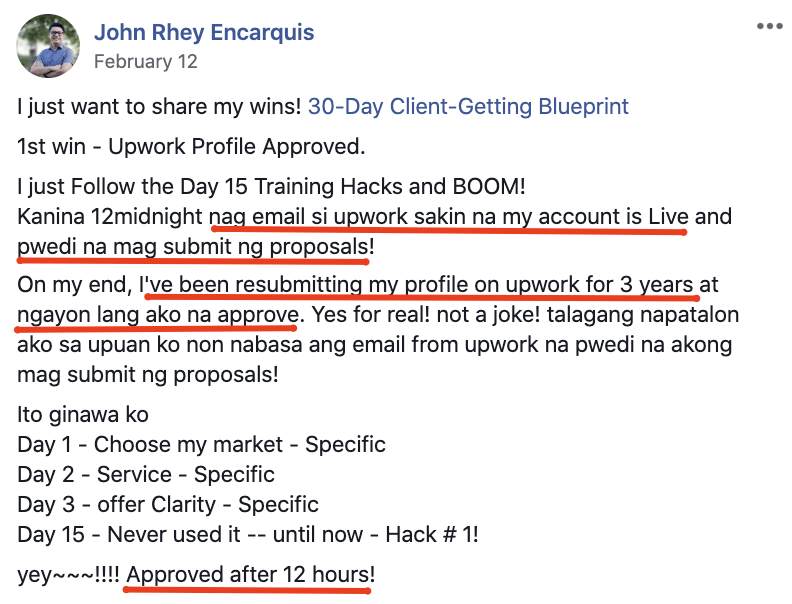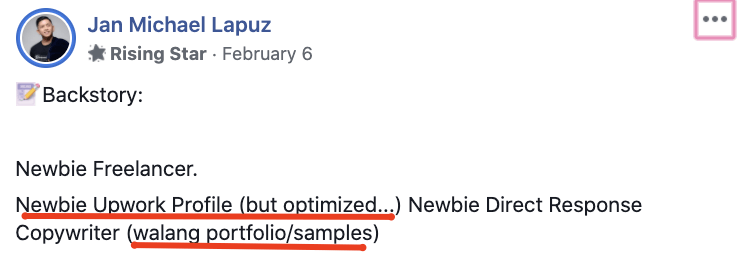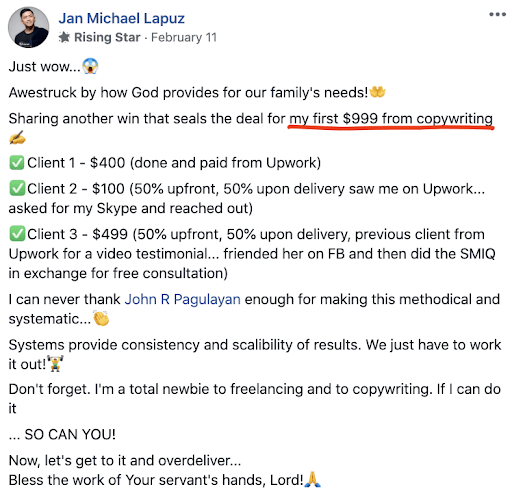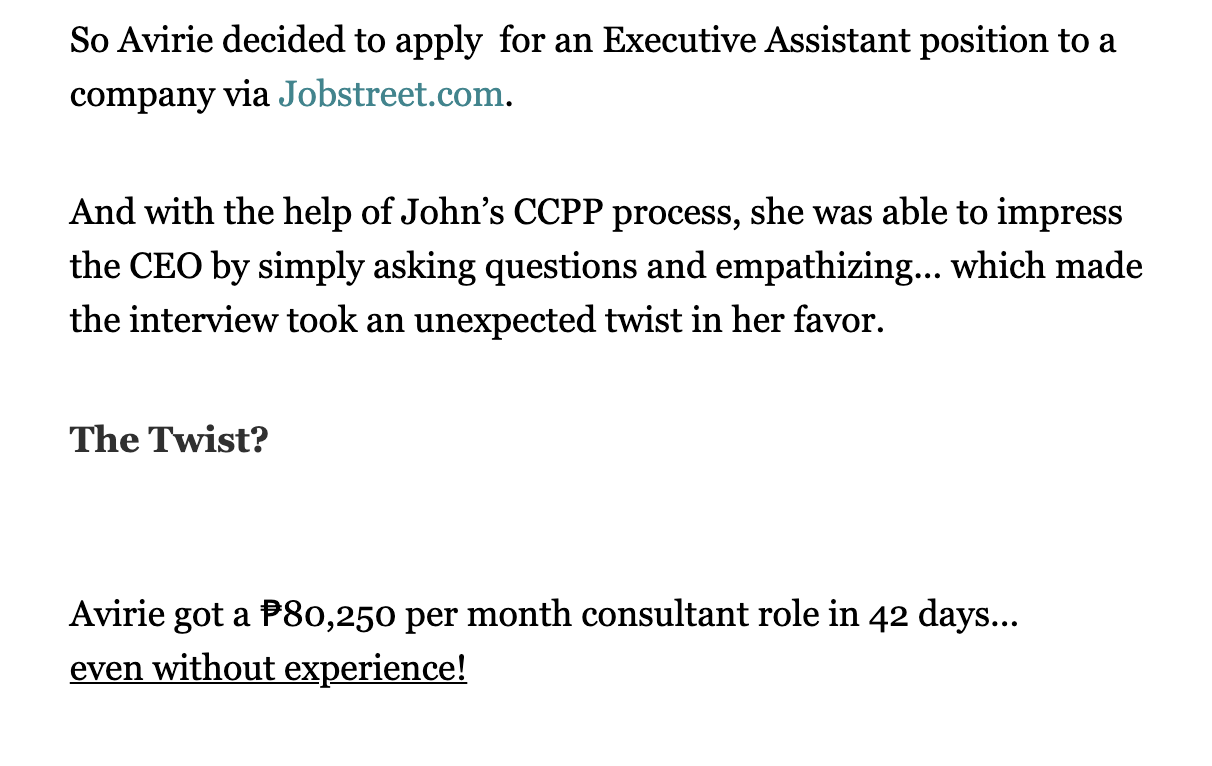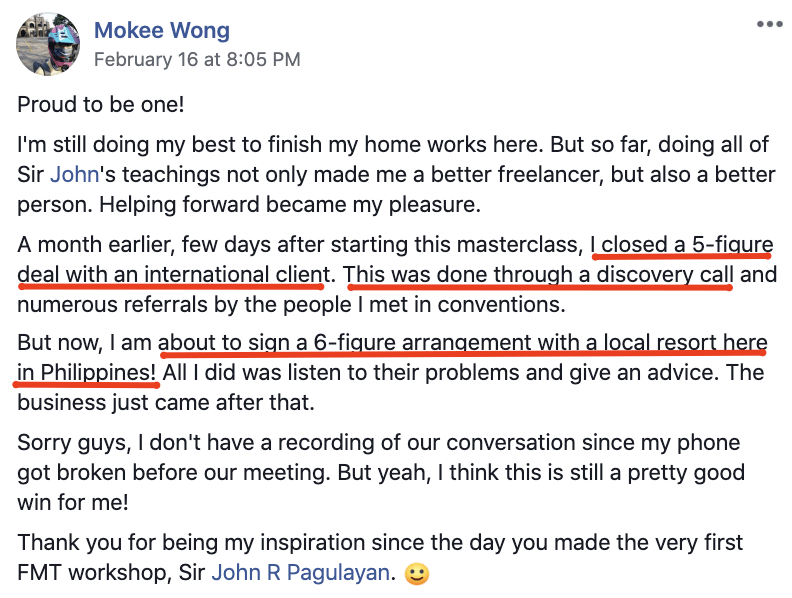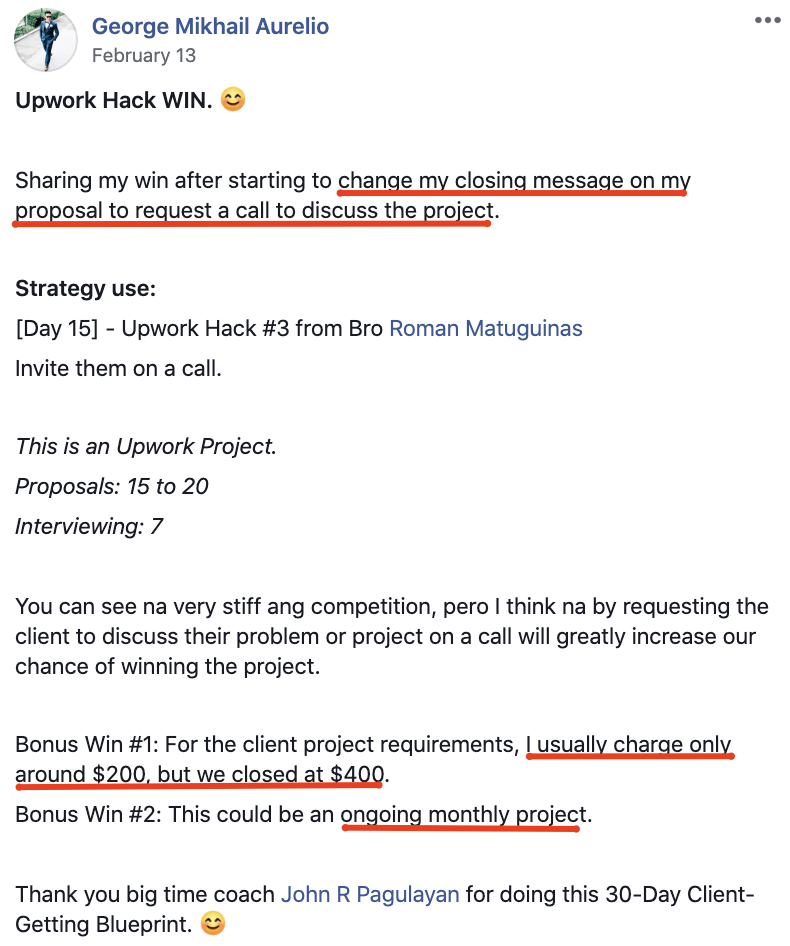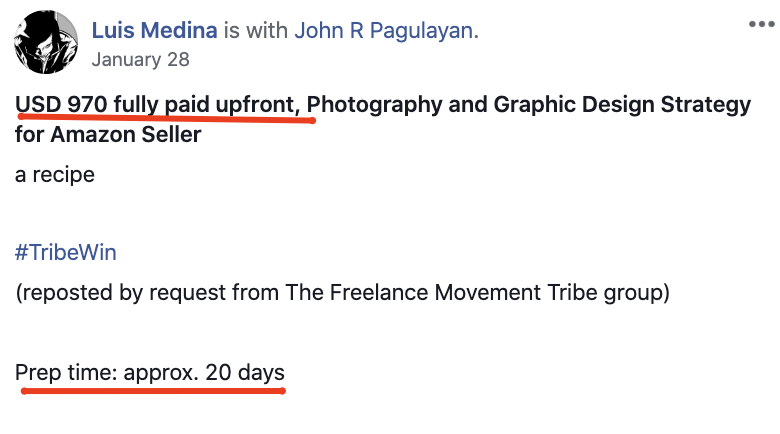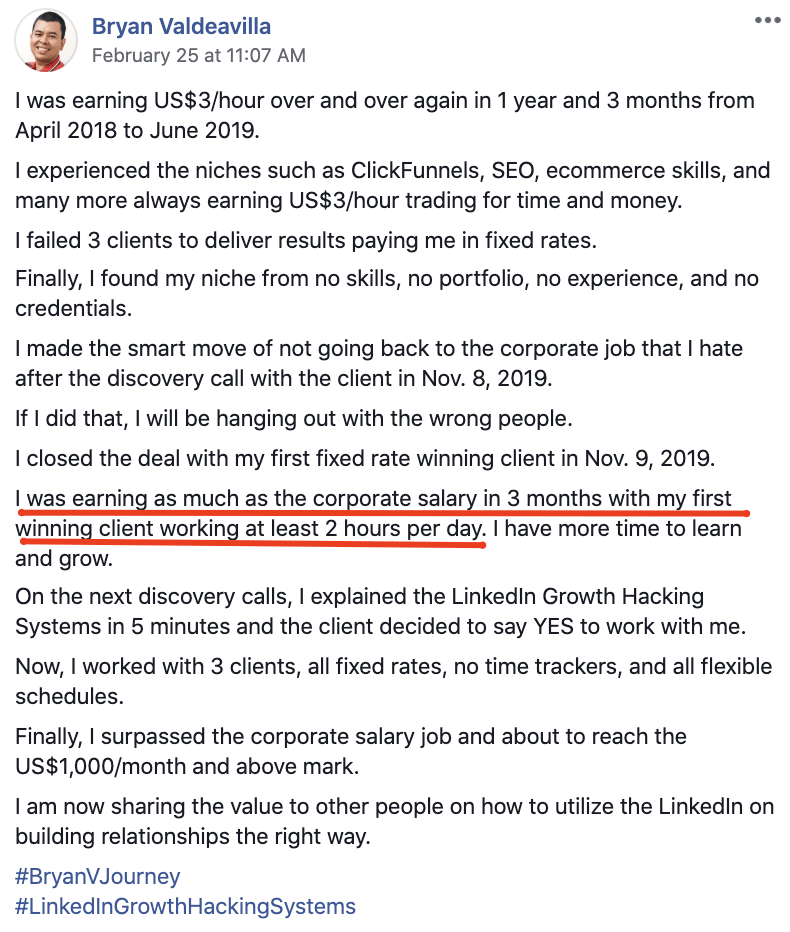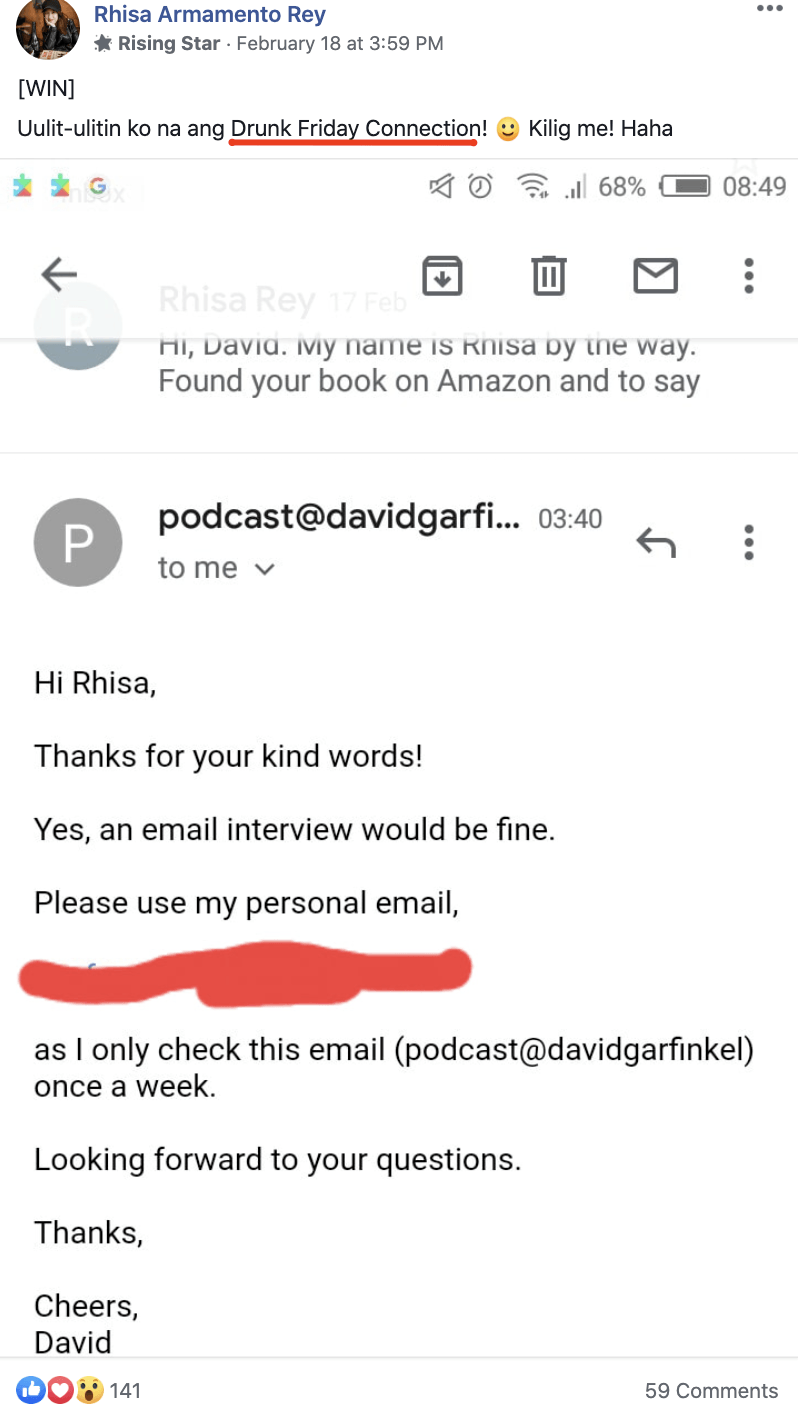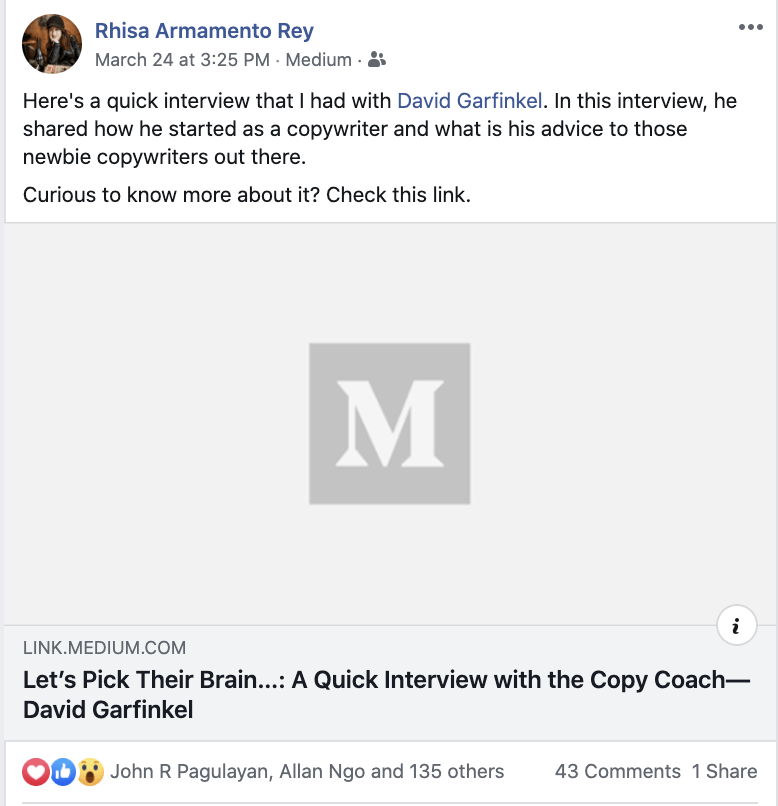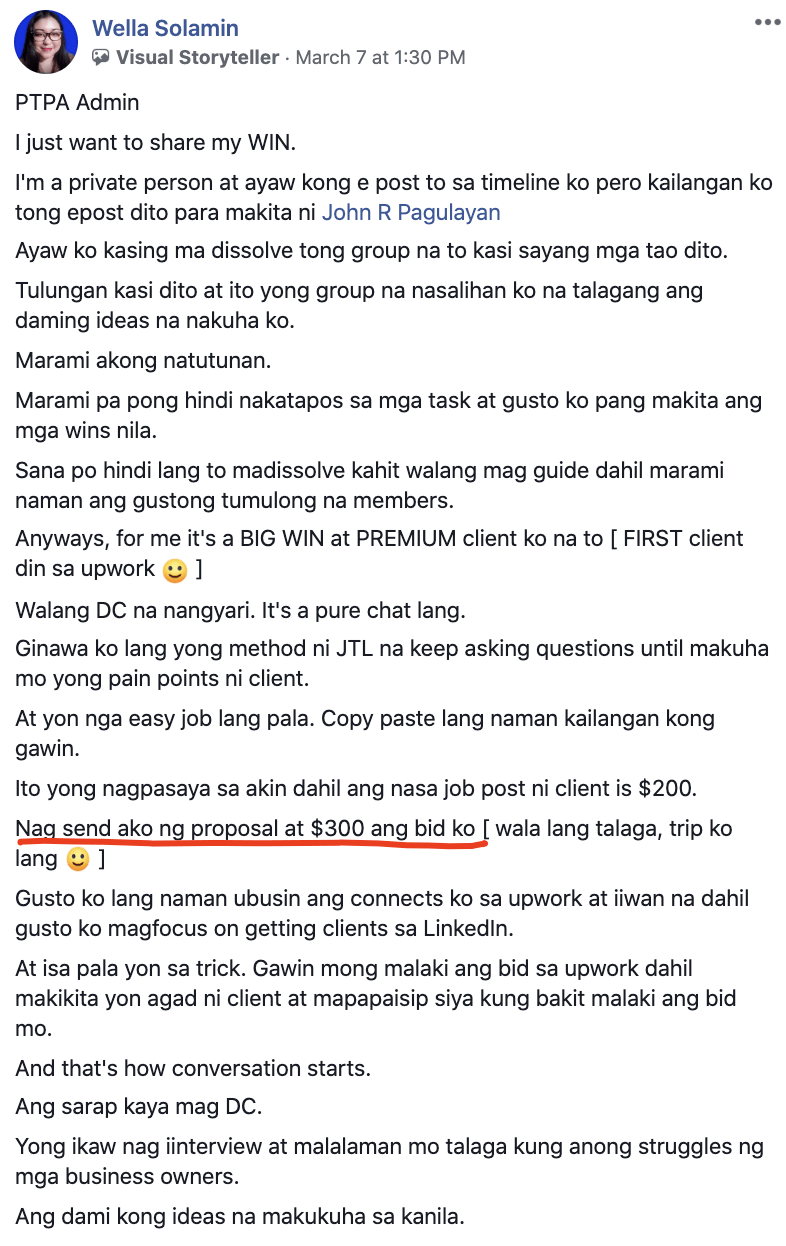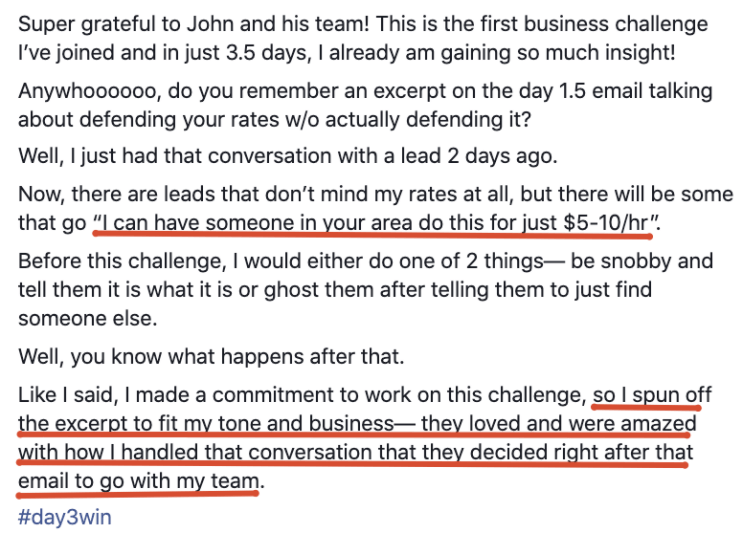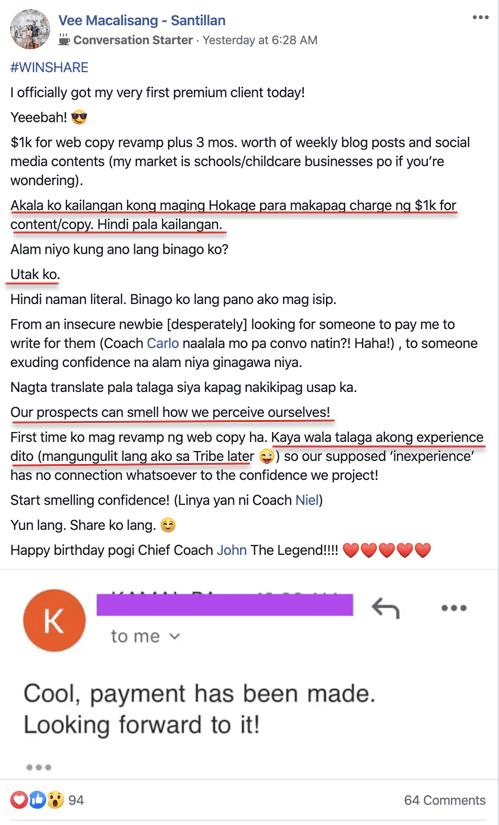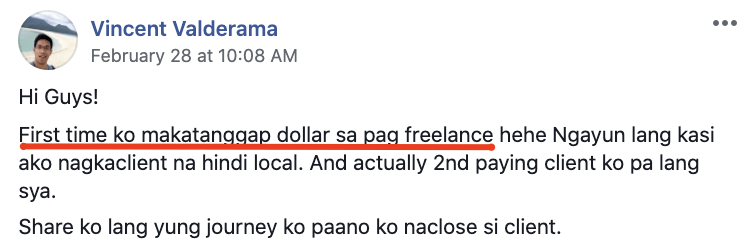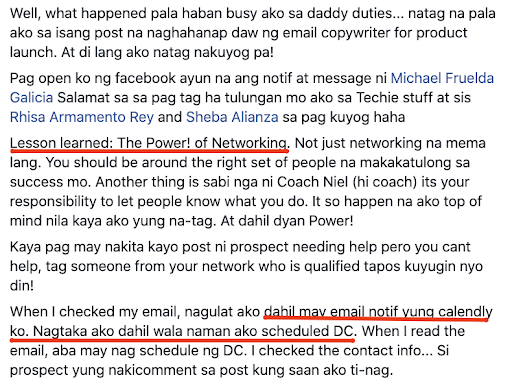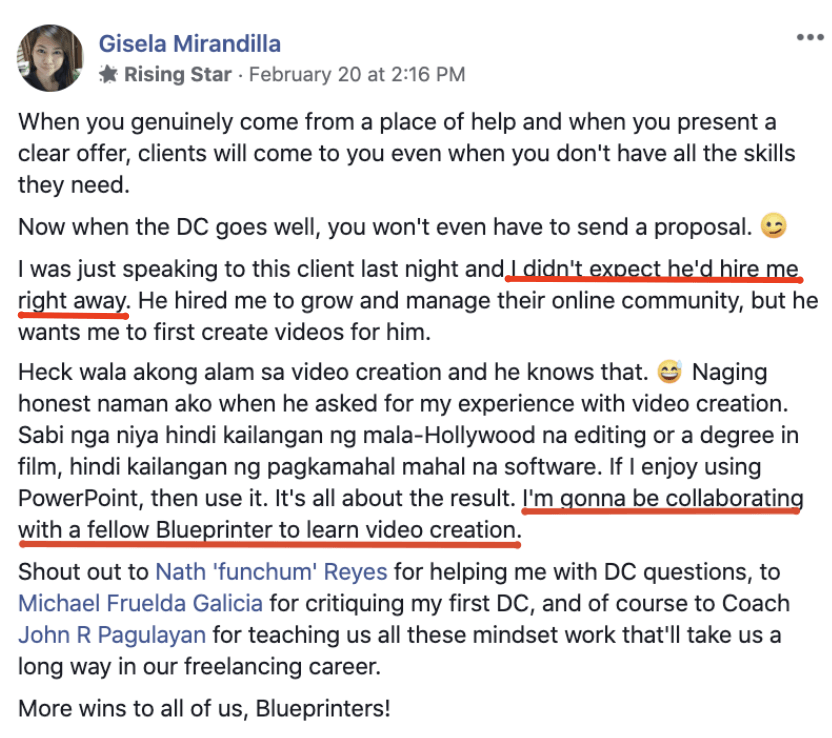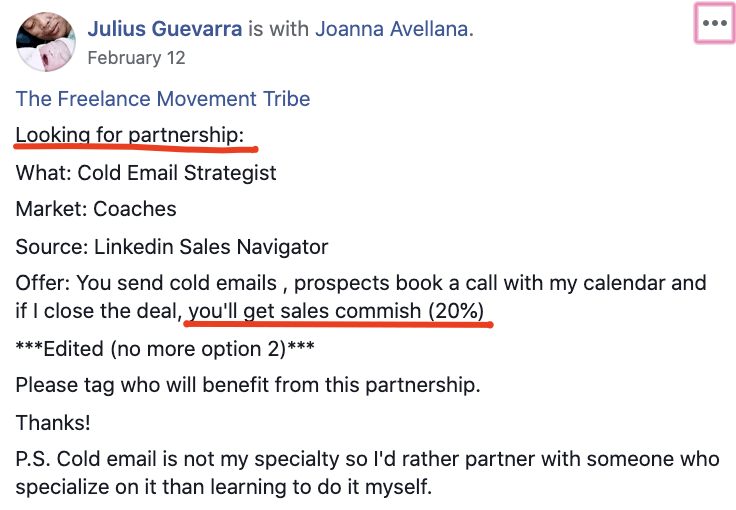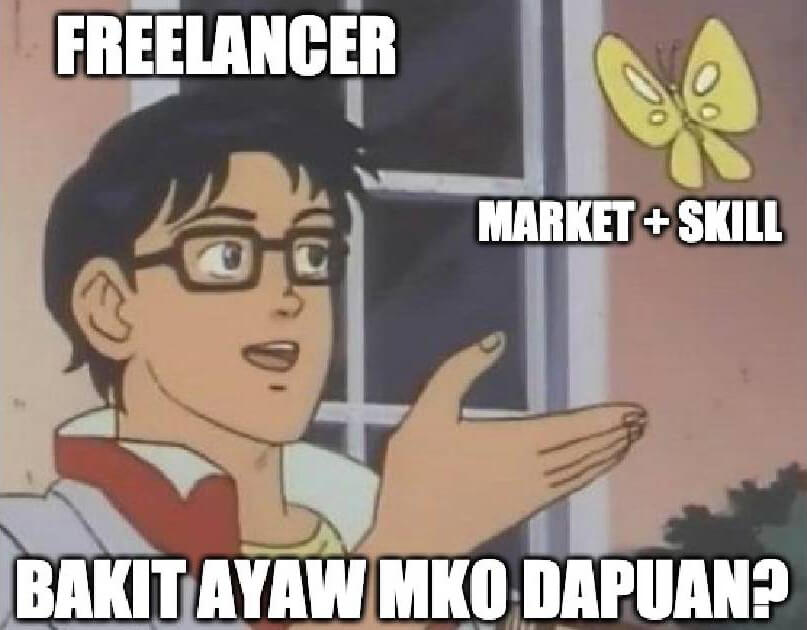“I’m stuck at my $10 hourly rate.”
“Why can’t I break through my current monthly income?”
“How should I tell my clients that I’m raising my rates this year?”
Charging higher rates is a classic problem for every freelancer, no matter what stage they’re in.
Newbie freelancers offer low rates just so they can snag their first clients, thinking it’s the easier path, but it actually is not.
Yaro Stark, serial entrepreneur and digital nomad says…
“You do not want to be the lowest cost provider because that’s a battle you can never win, plus lower prices result in attracting terrible clients. You will have no room to earn a profit margin, which is especially important if you want to pay yourself as well as your contractors.”
On the other hand, seasoned ones carry on with the same rates—for months or years—to avoid the risk of losing clients…
There’s nothing wrong with this.
It’s just that the time you spent working for that meager rate is a BIG opportunity cost that you keep missing out on.
Picture this.
Say you’re getting paid $10 an hour for your current project.
When you could’ve found qualified clients who are happy to pay you $30 for the same hour, then you’re literally losing $20 an hour.
Or $80 a day, assuming that you only work 4 hours.
That’s already a loss of $1,600 a month! (laki noh?)
It’s a hard pill to swallow when you finally take the time to do the math, reflect on the what if’s, and put a value to the losses.
Being okay with charging the same is an injustice to yourself.
So if you’re one of the freelancers who planned to drive straight to “premium rates highway” but make a sharp turn the moment you caught sight of a detour towards the “comfortable country road”…
Then read on.
Because more often than not, the only thing that’s stopping you from charging higher rates is… you.
How can you tell if this is you?When you’re doing at least 4 out of the 9 common freelancing practices below, then you probably are.
Let’s discover why.
1. You’re offering multiple skills to everyone.
There are 2 common misconceptions when it comes to freelancing skills:
- Technical skills are the only highly profitable skills.
- Only multi-skilled freelancers have the right to charge premium rates.
But as we always say inside the TRIBE, your freelancing skills don’t dictate your income.
Who would have thought that through virtual assistance services, a previous call center agent can pull off an average monthly income of $17,000?
No, this Virtual Assistant didn’t just get lucky with her rich clients.
Nor was she working 60+ hours a week to accumulate this money.
Nor did she just blindly charged super-high rates here and there to desperate clients.
She possessed the skills—the VA skills—that can solve her clients’ pressing problems.
And her clients are willing to pay high to eliminate the specific problems that are tormenting their businesses right now.
Here’s another thing.
She positioned her VA skills to established businesses that lack the systems to support their operations.
This makes her attractive to businesses that are specifically experiencing this kind of pain.
Thus, they’re more drawn to her compared to other general VA’s because they feel that she’s an expert who is capable of resolving their system-related problems.
Now here’s what you can do.
Focus on one skill.
That way, you’re perceived as a specialist by your target market.
Let’s take Nica as an example.
She’s a social media manager, a graphic designer, and a VA all in one. But she highlights one skill, depending on what the client needs.
When Nica did this, she was able to win 4 premium clients.
On top of that, she instantly became an agency and is now hiring Virtual Assistants for her own freelancing business.
When deciding which skill to market, pick one that will solve your target market’s problems.
If you’re having a hard time, don’t overthink and just choose one.Frankly, it really doesn’t matter which skill you have. Because in the land of freelancing, your skills only have a little to do with your ability to build a successful business.
Key takeaway: It sounds counter intuitive, but the fewer skills you have, the more money you can make as a freelancer.
Clients want specialists who are experts in solving the problems that they have—and they don’t mind paying huge amounts of money as long as you can take away their pains.
2. Your profile isn’t specific enough.
Are you one of those freelancers whose Upwork profile hasn’t been approved?
Seems like John Rhey here has cracked the code.
After 3 years of resubmitting his profile on Upwork, he finally got the sweet approval just 12 hours after he submitted his shiny new profile.
What did John Rhey do differently this time?
He included these 3 things in his profile:
- Specific skill
- Specific market
- The benefits his clients will receive
Honestly, these are all you need to make a world of difference in the way you create account profiles on Upwork or any other freelancing profiles.
Here’s what can an optimized freelancer profile get you.
Jan here earned $999 after 5 days of optimizing his profile (check out the dates in the screenshots).
Take note, Jan has closed 3 deals even if he’s a newbie freelancer with no portfolio or writing samples. All he did was optimize his Upwork profile before connecting with prospects.
Key takeaway: If on the first impression you can’t communicate what you can do for your clients, then you’re most likely to pass off as just another writer. Or a graphic designer. Or a funnel builder.
Optimize your profile to show the benefits your future client will receive from working with you and the results that you can get them. When you show prospects a solid understanding of their problems, wants, and needs, they’re more likely willing to pay higher rates.
3. You keep on talking about your credentials, your past work, and your past achievements.
Remember how you used to be interviewed when you applied for your first “real-life” job?
There’s always the part where you’re asked to share a little bit about yourself, your achievements, and your past work.
Well, with the TRIBE’s way of freelancing, it’s actually the opposite.
It’s the freelancer—you—who should be asking questions.
The goals in asking these questions are for you to:
-
Discover your clients’ problems.
-
Determine if you can help the clients solve those problems.
-
See if the client is someone that you’d like to work with.
We do this through what we call the CCPP process.
It’s the same process that enables John and the TRIBE freelancers to get high-paying clients.
Like Avirie here who has bagged an $80K monthly consultant role through JobStreet.
And Mokee who has closed a 5-figure international deal and a 6-figure local deal.
Now, why do we need to be the one who’s driving the interview?
Simple.
It’s because we want to find out what our prospects’ ‘actual’ problems are.
When we do, we have the information that we need to create a tailored fit strategy that will solve their specific problem.
And by now, you should know that clients are willing to pay higher rates to freelancers who show the ability to solve their problems, end their pains, and give them what they wanted.
Key takeaway: If you want to charge higher rates, talk less about you and more about the client. Find out what they’re struggling with. Find out what hurts their business right now. Find out what they want to achieve in the next months.
Because in reality, clients don’t care if you have finished a copywriting course, earned a digital marketing certificate or graduated from a business course. All they care about is if you can get them the results that they want.
4. You’re not talking to your prospects on the phone.
In the previous section, we’ve talked about the CCPP process that we use inside the TRIBE to grow to a stable 6-figure (or to some, 7-figure) freelancing business.
CCPP, in a nutshell, looks like this:
CONNECT > CALL > PROPOSAL > PAID
And to most freelancers, it’s the call part that stops them from moving forward.
They said that as introverts, it’s just natural that they dodge activities where it involves talking to strangers, especially with the camera on.
That’s totally normal.
But here’s why you should overcome this.
A call has an essential role in letting you command higher prices. Here are a few reasons why:
- Putting a face to a name adds a “personal touch” to the communication and it helps set the foundation of trust at the start of a good working relationship.
- You get to counter objections on the fly, clearing your pathway to the sale.
- The facial expressions of your prospects serve as non-verbal cues so you can gauge interest, adjust the tone of your voice or use more exciting language to capture their attention.
That’s why when George here changed his client acquisition strategy with a request for a call at the end of his proposal, he was able to charge double his usual rate.
If you’re still anxious to get into a call with a prospect, here’s what you can do.
Having a good Discovery Call (DC) all boils down to the preparation so you know which questions to ask your prospect and hit the actual pain points that he has right now.
When you can get them to talk about themselves and their problems, then you’re good.
(For TRIBE members, we have a Discovery Call Script that you can refer to so you can control the call right from start and end the call strong.)
Key takeaway: Hopping on a call with your prospect makes it easier for you to command higher rates not because you can speak well or you can freely explain what you can do for their business. It’s because calls help you diagnose your prospects’ problems better.
…And when you do, you position yourself more like a consultant who’s more concerned about solving their problems than selling your service. What happens then? The clients themselves WILL justify your high fees.
5. You’re too focused on getting new clients, you forgot about your existing ones.
Almost every freelancer is always on the hunt for new clients.
But what they don’t realize is this.
It’s easier, quicker and more practical to offer another project to existing clients rather than to convince another stranger to avail of your services.
For one, you have already earned their trust before. They paid you for a project.
If you have done even a decent—not even great, just decent—work, then they’re most likely willing to give another project a go with you.
Think about all of your past clients.
Yes, even those who have paid you lower fees. You might not know, they might be ready to pay you higher prices for bigger projects today.
Just like Luis here.
He has managed to extend an initial $60 task into another $997 project, fully-paid upfront in just 20 days.
As to how he did it, here’s a summary.
After he worked on a document formatting task for this client, he was asked to do another $20 task to create a product box design.
Upon knowing that this client seemed to need more projects, he dug deeper and invited him to a DC (a.k.a. discovery call, which we discussed in the previous section).
It’s during the call when he was able to discover the target revenue, margins, and the budget for the project.
And because he was able to handle the client’s objections successfully, he was able to close the $997 project.
Key takeaway: Keeping clients is the underrated way of closing higher projects. It’s easier to sell to clients whom you have worked with before as the trust is already there. It’s also a whole lot smoother to work with existing clients because you already know their workflows, their quirks, and the dynamics of working with them or their teams.
Spot value-adding opportunities that will help your existing clients get more traffic, drive more engagement or close more sales. Offer the solution as another project.
6. You’re approaching the wrong clients.
If you’ve been struggling to close high-priced deals, have you ever thought about it this way?
That your service is only a “nice to have”, not really a must-have…
That your market is not willing to spend premium fees for the service that you offer…
That what you’re solving eliminates some problems, but they have bigger pain points that keep them more awake at night…
In short, if you can’t command higher rates, then it may not be you.
It might be the clients—they’re not the most ideal for you.
Here’s Bryan’s story.
He went through a lot of niches and skills: ClickFunnels, SEO, eCommerce skills but it was only after he found his perfect niche when he was able to match his corporate salary by just working for at least 2 hours per day.
If your ideal clients don’t come to you, then you may have to explore a different market, start looking for them in different places, or be bold and send out an email to them—even if you’re intimidated.
Like Rhisa here who was bold enough to reach out to a professional copywriting coach.
A few weeks later, she has this meaty piece of content that pushes her copywriter status up a notch.
Closing premium deals take two to tango…
You, the freelancer and a qualified client with the capacity and willingness to pay.
Key takeaway: It’s important that you know what your ideal client looks like so you’ll know where to find them, what their problems are, and how to attract them. And if your desire it to get a client who will pay you premium, then you should also find out if they have the capacity to do it in the first place.
7. You think you don’t deserve to get paid premium.
This one’s going to sting, but this is common.
If I tell you now to imagine yourself saying your desired rate out loud in a call with your prospect, how would you feel?
If the mere thought sends a cold rush in the pit of your stomach that you’d happily abandon the chances of winning that deal just so you can swim back to the comfort of your old rates, then we need to work on your mindset.
Most of the time, the reason why we don’t get paid premium is that we don’t charge premium.
Because we feel that we’re not yet an expert on the niche that we have chosen…
Or we’re not confident that our skills can bring the clients the results that they need…
Or that we’re Filipinos and the standard of living here doesn’t require me to charge a much as our foreign counterparts…
We lack the guts to just do it.
Pia Silva, a brand strategist, has good advice on this,
Guts are another thing we want to all believe we have, just like we want to believe our service is valuable. But having guts means doing things most people don’t do to get results that may seem impossible today. I assure you that whatever you are insisting is “impossible” is just something you haven’t approached with the guts it takes to try it out—or to stick with it long enough for it to work.”
Tell you what.
Just try charging higher this time.
Don’t worry too much about losing the deal.
Be like Wella who sent out a $300 proposal even if the posted budget is only $200.
Or like this Digital Agency owner who was able to counter the price objection, impressed the prospect, and closed the deal for her team.
And most importantly, believe that you deserve to get paid premium.
Because if you’re not convinced that you can get paid at that rate, then how can you convince your prospect?
Do what Vee did.
To close a $1,000 deal, she changed her mindset.
Key takeaway: Sometimes, the only thing that’s stopping you from charging higher freelancing rates is you.
It’s more convenient to settle for an okay payment than deal with the blows of trying to charge higher. True, you may lose your existing client for raising your rates or fail to close a prospect because you “charge too much”, but what if you succeed?
8. You’re alone in your freelancing journey.
Now you may ask, what does being a lone freelancer have to do with charging higher rates?
A lot that’s not too obvious to most freelancers.
Especially those who see other freelancers as their competitors.
So let’s follow on the stories of these outstanding Blueprinters (a group of freelancers who took on John’s 30-Day Client-Getting Blueprint Program).
Vincent starts,
He attributes this win to the power of networking.
But trust me, this networking is nothing sort of the one that you’re thinking right now.
To sum it up, Vincent got tagged by his fellow Blueprinters and a couple of TRIBE members in a Facebook Group post by someone who was looking for a launch email copywriter.
Getting tagged on a “looking for” post is equivalent to a recommendation.
And this gives the prospect the notion that you’re well-known in this area, people know you.
Another reason why you can command higher rates if you have a community of freelancers with you is collaboration.
Gisela here didn’t let her lack of skill stop her from closing a client.
She plans to work on a video creation project with a fellow Blueprinter who knows how to do this.
We all know how lucrative the video creation industry is.
If you’re still hesitant to charge premium, try this.
Connect with freelancers who are already doing this.
Being surrounded by people charging premium fees makes the act itself look normal and removes the alarm going off in your brain.
Numerous studies have already proven this including ProOpinion’s Business Research.
Take for example Julius, a funnel builder, a 2-comma club awardee, was looking to partner with a cold email specialist.
Working with him would let you experience first hand how it feels like earning premium minus the pressure of having to tackle it alone.
I’d say that’s a pretty good step 1 for charging premium on your own.
See, this is just some of the ways on how having a community of freelancers rallying beside you affects your growth positively.
No wonder there are a lot of successful freelancers inside the TRIBE.
In fact, TRIBE members have started businesses together…
Businesses that supplement their freelancing income and enable them to get more income than they could have ever generated if they were on their own.
Key takeaway: Having a group of freelancers who support you in conducting your business is essential. As the saying of Jim Rohn goes, “You’re the average of the 5 people you spend the most of your time with.”
Having a group to keep you accountable and support you is one of the most powerful aspects of building a successful freelance business.
Change your ways, control your income
Now that we’ve cleared up the air on why you’re struggling to charge higher rates, you have a clear direction of what you should and should not do.
Stop the 8 common freelancing practices above that actually do more harm than good. And get ready to take back control over your freelancing income.
Do these instead.
-
Offer one skill to one market. The fewer skills you have, the more money you can make as a freelancer. Clients want specialists who are experts in solving the problems that they have and they are willing to pay huge amounts of money for it.
-
Showcase a specialized profile. Optimize your profile to show the specific problems that you can solve and the specific results that you can get them. When you show prospects a solid understanding of their problems, wants, and needs, they’re more likely willing to pay higher rates.
-
Stop talking about yourself. Start talking about the clients and their problems. Clients don’t care if you have finished a copywriting course, earned a digital marketing certificate or graduated from a business course. All they care about is if you can get them the results that they want. If you lead with value, then they themselves WILL justify your high fees.
-
Talk to your prospects over a call. It’s easier to uncover your prospects’ problems when you’re on a call. This diagnosis positions you as a consultant who cares more about solving their problems more than selling the service.
-
Solve more problems for your existing clients. Keeping clients is an underrated way of closing higher projects. Spot value-adding opportunities that will help your existing clients get more traffic, drive more engagement or close more sales. Offer the solution as another project. And if the project demands more work, upping your price will be justifiable.
-
Work only with the clients who are fit for you. Know what your ideal client looks like so you know where to find them, what their problems are, and how to attract them. If your desire it to get a client who will pay you premium, then you should also target those who can afford your services in the first place.
-
Believe that you deserve to command higher rates. More often than not, the only thing that’s stopping you from charging higher freelancing rates is you. You have to convince yourself that you deserve to get paid premium before you can convince your prospect.
-
Find a supportive freelancing community. Having a group to keep you accountable and support you is one of the most powerful aspects of building a successful freelance business. And remember, you don’t have co-workers anymore—your fellow freelancers can be your virtual co-workers whom you can chat to all day long—they’ll keep you sane. 🙂
Speaking of finding a supportive freelancing community, if you think you’re ready to be part of the TRIBE when it reopens, you can immediately apply…
